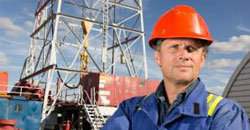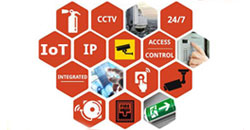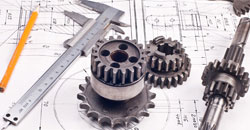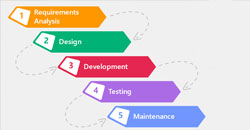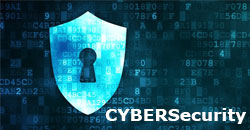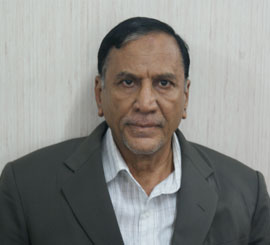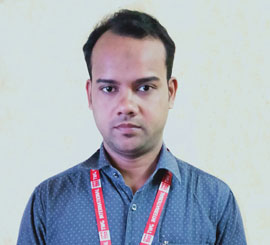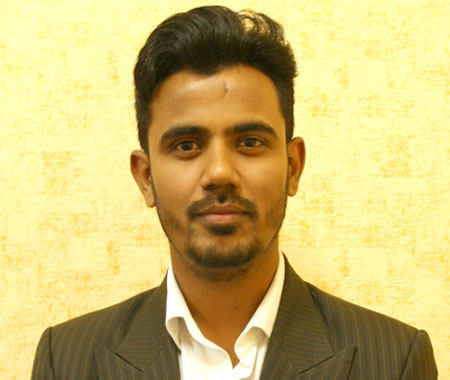WhyNDT qualification is need?
Accident prevention and to reduce costs,To improve product reliability,
To determine acceptance to a given requirement,
To give information on repair criteria.
Why is NDT important?
NDT is necessary whenever we need to assure ourselves of the integrity of our infrastructure. Aircraft, trains, pipelines, oil rigs, bridges and pressure vessels are examples of everyday things that are regularly examined.In addition to the need to ensure safety, non-destructive testing can be used to improve output and profitability. Furthermore, a component or an entire structure or machine can be tested many times using several types of tests through the complete life cycle to ensure its continued integrity.
Eligibility
10+2(Inter). Diploma.B,Tech.B,E. M,Tech. MBBSJob designations
NDT TraineeNDT Technician
NDT Inspectore
NDT Coordinator
NDT Incharge
NDT Supervisor
NDT Site Incharge
NDT Engineer
NDT Project Manager
NDT Country manager
American Society for Nondestructive Testing (ASNT)
The American Society for Nondestructive Testing, Inc. or ASNT is a technical society for nondestructive testing (NDT) professionals. ASNT evolved from The American Industrial Radium and X-Ray Society which was founded in 1941.Its headquarters is located in Columbus, OH, and there are 70 local sections in the USA and 14 local sections in other countries.
Non Destructive Testing (NDT)
NDT stands for non-destructive testing. In other words it is a way of testing without destroying. This means that the component- the casting, weld or forging, can continue to be used and that the nondestructive testing method has done no harm. In today's world where new materials are being developed, older materials and bonding methods are being subjected to higher pressures and loads, NDT ensures that materials can continue to operate to their highest capacity with the assurance that they will not fail within predetermined time limits. NDT can be used to ensure the quality right from raw material stage through fabrication and processing to pre-service and in-service inspection. Apart from ensuring the structural integrity, quality and reliability of components and plants, today NDT finds extensive applications for condition monitoring, residual life assessment, energy audit, etc.
There are many NDT techniques/methods used, depending on four main criteria:
- Material Type
- Defect Type
- Defect Size
- Defect Location
- Theory, Practical, Exam & Certification
- Practical, Exam & Certification
- Exam & Certification
- Certification/Renewal
- Industrial Visit
- Practical for All Test
- Radiography Testing – RT
- Ultrasonic Testing –UT
- Penetration Testing -PT
- Magnetic Particle -MT
- Visual Testing -VT
How it works?
Basic ExamTheoretical training
Practical Training
Written Examinations
Practical Examination
Certification
The UT Level I course details:
- The principles and theory of performing ultrasonic examination, including the nature of sound propagation and acoustics
- Description of pulse echo, transducer, thickness, flaw detection, and immersion equipment and their operation, calibration and maintenance
- Basic testing methods
- Straight beam and angle beam inspections to specific procedures
- Review of ultrasonic indications, discontinuities, product forms and their appearances, interpretation and evaluation of results, and completion of data and technique records
- The principles and theory of performing ultrasonic examination, including a review of ultrasonic principles, testing techniques, equipment and calibration
- Evaluation of base-material product forms, including process review, types, origin & orientation of associated discontinuities and their responses to ultrasound, and applicable codes & standards for each
- Evaluation of weldments and bonded structures
- Discontinuity detection and techniques
- Evaluation procedures and object appraisal
Interpretation of reflected sound from parallel surfaces is a fairly comprehensible endeavor for even trainees, but throw in oblique’s and even Level IIs can be caught head-scratching. Coupled with weld configurations, it can be down-right intimidating to interpret angular sound waves.
This course expands a technician’s ability to work with oblique soundwaves in relation to buttweld configurations, and the many variables that can make interpretation difficult. From set-up procedures to test procedures, the technician is exposed to the current industry requirements which can be tailored to the inspectors’ industry base, ASME V or AWS D1.1 or 1.6. Attention is also paid to report writing which is emphasized during hands-on instruction portions of the course. A pre-requirement for taking this training is at least a Level I studying to become a Level II.
This is a 3-day, 24 hour training program and is additional to the 40 hour Level II training outlined in SNT-TC-1A, 2006.
The RT Level I course details:
- The principles and theory of performing radiographic testing, including a perspective on radiographic materials, industrial radiography, and protection
- A math review
- Fundamental properties of matter
- Radioactive materials
- Types of radiation
- The interaction of radiation with matter
- Biological effects of radiation
- Radiation detection
- Exposure devices and radiation sources
The RT Level II course details:
- The principles and theory of performing radiographic testing, including a review of basic radiographic principles
- Operation of darkroom facilities, techniques and processing
- Indications, discontinuities and defects
- Manufacturing processes and associated discontinuities
- Review of radiological safety principles
The PT Level I course details:
- The principles and theory of performing liquid penetrate examination, including the nature of capillary action
- Liquid penetrate processing
- Various testing methods
- Operations and descriptions of portable and stationary equipment
- Review of indications and discontinuities and their appearances
- The principles and theory of performing liquid penetrant examination, including a review of basic principles, methods and equipment
- Selection of appropriate test method
- Various testing methods
- Inspection and evaluation of indications and discontinuities
- Inspection procedures and standards
- Basic methods of instruction
The MT Level I course details:
- The principles and theory of performing magnetic particle examination, including the theory of magnets, magnetic fields and demagnetization
- Characteristics of magnetic fields
- Effects of discontinuities on materials
- Magnetization by means of electric current
- Selecting the proper method of magnetization
- Inspection materials
- Magnetic particle testing equipment
- Types of detectable discontinuities
- Magnetic particle test indications and interpretations
- The principles and theory of performing magnetic particle examination, including a review of the theory of flux fields, magnets and magnetism
- The effects of discontinuities on materials
- Magnetization by means of electric current
- Selection of proper magnetization methods
- Demagnetization procedures
- Operations and description of equipment
- Types of discontinuities
- Evaluation techniques
- Quality control of equipment and processes

